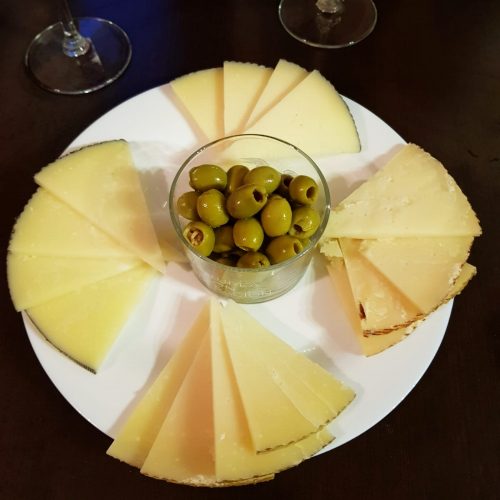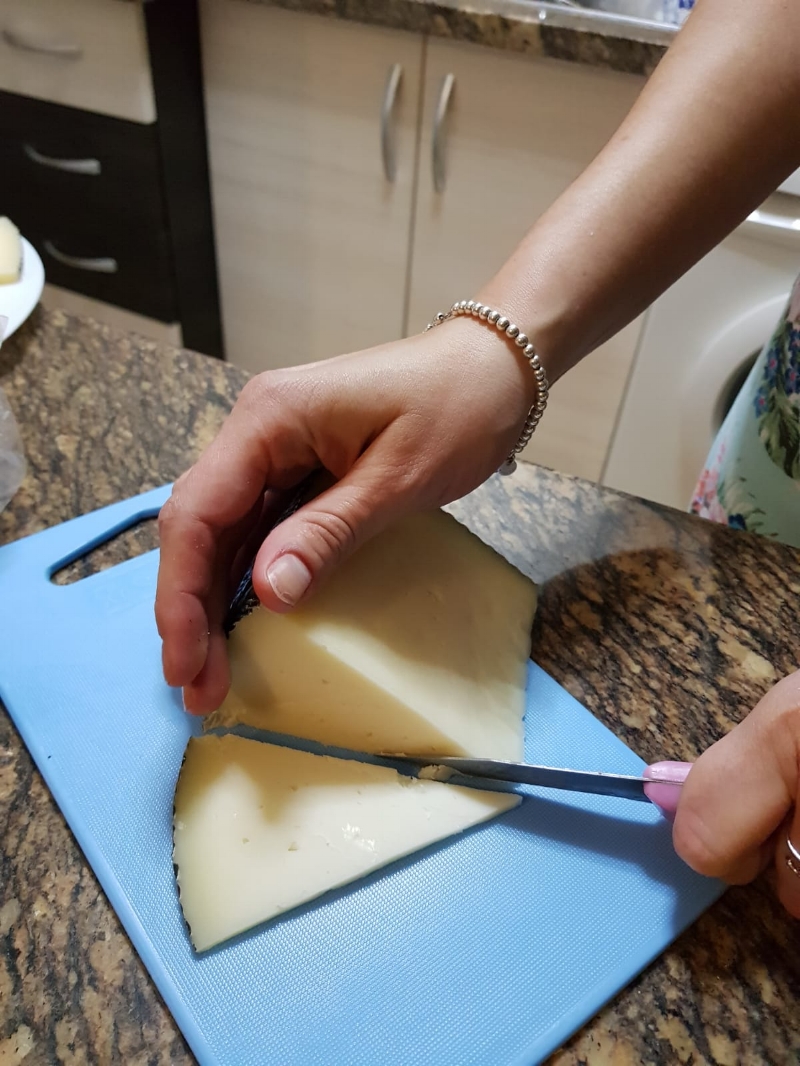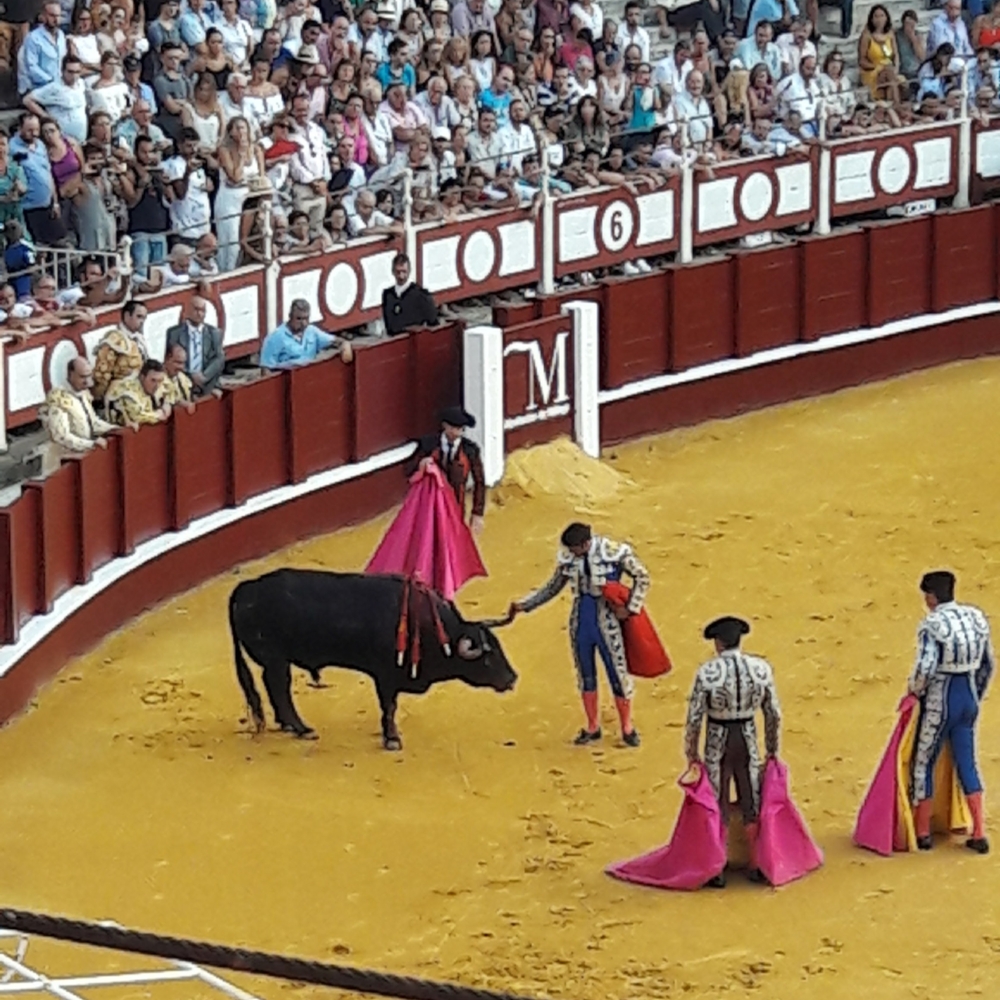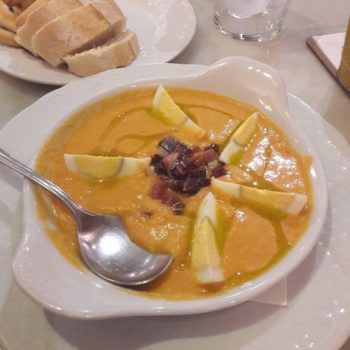
A Beginner’s Guide to Spanish Cheeses
Dear Ana,
If you know you me well enough, you know that I am an avid cheese-lover. I tend to have approximately five different types of cheese in my fridge at any given time—I have too many cheese needs for any less. So when Claudia suggested I write an article about Spanish cheeses, I jumped right into action with my research…field research, of course!
I have to admit that before coming to Spain I was never really that person who would have a wine-and-cheese night but boy do I love the excuse to be that person now. For this beginner’s guide I won’t dive into every variety of cheese you can find here in Spain (there are A LOT!) but will instead cover the most basic ones you will come across at the grocery store, complete with their English translations and my (and my boyfriend’s) personal evaluations.
 Fresco
Fresco
Literal translation: fresh cheese (meaning it has not been aged at all)
Personal Evaluation: This is not the kind of cheese that you would eat on its own and at least in my opinion, it honestly doesn’t even have a flavor. It’s super soft and wet—generally coming in a plastic container with liquid around it—making it a very different style than the rest of these cheeses. Regardless of its blandness, I do buy it for certain dishes as it’s quite popular in salads, on tostadas, and even with some membrillo or another sweet compliment as a dessert.
Tierno
Literal translation: tender cheese (meaning it has been aged for a very short time, typically less than two months)
Personal Evaluation: This is the most “American-like” cheese of them all; it reminds me of cheese-and-crackers platters my mom would make for parties so perhaps it is similar to a white cheddar or colby cheese. There’s nothing exceptional about it and you wouldn’t typically serve this one on a cheese platter in Spain but it still makes good finger food in my opinion or could easily be mixed into any dish.
 Semicurado
Semicurado
Literal translation: semi-cured cheese (meaning that it has been aged for a relatively short time, typically two or three months)
Personal Evaluation: This is a pretty palatable cheese. I say that to mean that anyone would enjoy it and you can definitely eat it alone or alongside any dish, it does not have any overpowering flavor that you need to worry about pairing properly. It is a relatively soft and ‘wet’ cheese (but not queso fresco level, it’s just not dry like the viejos).
Curado
Literal translation: cured cheese (meaning it has been aged for a decent amount of time, typically four to six months)
Personal Evaluation: This cheese would also be a general crowd-pleaser as it has a very familiar taste, possibly reminiscent of your childhood. Although great eaten by the slice, you could also throw this cheese on a sandwich or in a salad with no problem. It was actually a bit softer than the oveja curado but had a juicier flavor that lingered a bit longer.
Oveja Curado
Literal translation: cured sheep cheese (this is essentially a cured Manchego cheese, but it cannot legally be considered Manchego unless it was made from sheep from the La Mancha region)
Personal Evaluation: This is definitely an everyday, everybody kind of cheese. Great for enjoying however you please. Quite similar to semicurado, really, just slightly harder in texture. It’s not incredibly potent, but also not incredibly memorable. This is a great traditionally Spanish-style cheese to start with if you want to learn to enjoy cheese but don’t have that tendency yet.
 Oveja Viejo
Oveja Viejo
Literal translation: matured or old sheep cheese (meaning that it has been aged for a relatively long time, typically more than seven months and sometimes upward of a couple years)
Personal Evaluation: This cheese was the one that most surprised me as I didn’t quite like it the first time I taste-tested it but by the end of the night it had become my favorite one! It definitely has a creamier, denser taste than the others on this list and its flaky texture reminded me of grated parmesan. It has a slightly plastic-y texture (is it just me, or do other people notice a squeak when they bite into certain cheeses!?) and can be identified by the flaky, harder bits from the aging process. Honestly, I think I liked this cheese best as it made me feel fancy without the super-powerful aftertaste.
Viejo Tostado
Literal Translation: matured, toasted cheese (this seems to be a pretty unique combination characteristic of Mercadona’s Entepinares line of cheeses, but they did win an award for it in 2017, so that’s pretty cool and it definitely feels worth including)
Personal Evaluation: My boyfriend’s exact reaction was “this is a desgustación cheese” aka this is for sampling off a cheese platter, not casually enjoying with a meal. We believe this one may scare some people off as it’s definitely got a stronger aftertaste and harder, almost plastic-like feel, similar to the oveja viejo. Oddly enough, the initial bite has a bit of a duller, drier taste but the aftertaste—resulting from the toasting no doubt—is what may make this one more of an acquired taste.
As I said, this is a very basic introduction to the Spanish cheeses that you will likely encounter in your everyday life. However, if you’re a guiri yourself I think this is the perfect list to get you started with a general understanding of these different types of cheese. Keep in mind that our research may have been affected slightly by a variety of factors, such as the temperature the cheese was served at, the type of knife it was cut with, and even the density of the slices. However, as non-professional cheese-lovers we simply had a great time putting in the ‘work’ to provide you this guide.
Hope you enjoy and please let us know how your cheese exploration goes!
Sincerely,
Spain





6 Comments
Peter
Are some of these more expensive than others? I would have expected the cheeses that need time to mature to cost more? I’d pick a good cheesy cheese over an average cheese, but not if it cost 5 times as much.
ondrejka1987@gmail.com
I dare to disagree with the description of fresco cheese. For me "queso fresco de cabra" was the best kind of cheese in Spain when I was living there. Especially from the small villages on Cannary islands, with cup of vino tinto and aceitunas. But I understand that taste is different from people to people 🙂 On the other hand, the article is perfect, very informative and interesting. Good work.
Sincerely, Spain
Thank you for sharing your experiences Michal! We haven’t really tried the "queso fresco de cabra" but it is definitely now on our list!! One can never explore these kinds of experiences enough 😉
jamonessinfronteras.com
Spanish cheeses, including Manchego, are a treat for cheese enthusiasts. With their rich flavors, unique textures, and centuries-old traditions, they showcase the diversity and artistry of Spanish cheesemaking, delivering a truly exceptional culinary experience.
Pingback: